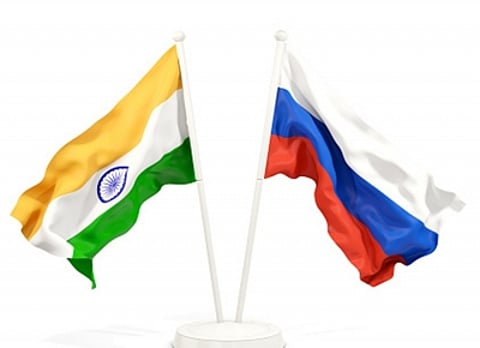Increase in trade between Russia and India is a revival of the Silk Road
According to the Observatory of Economic Complexity, a global trade statistics platform, India increased monthly imports from Russia by 430 percent compared to the five-year average.
The Ministry of Industry and Trade of India reported that trade turnover between Russia and India exceeded $18.2 billion in the first five months of the fiscal year. The surge in trade between the two countries made Russia the country's seventh largest trade partner, rising from 25th place with a total trade turnover of $13.1 billion in 2021.
Of the total bilateral trade from April to August, India's imports from Russia totaled $17.2 billion, while Indian exports to Russia totaled $992.73 million.
The start of transportation along the International North-South Transport Corridor (INSTC) and the partnership relations established between the countries in recent years have largely contributed to bilateral trade growth.
"Our economies are increasingly benefitting from the interaction. The leadership of Prime Minister Modi saw many achievements in recent years, and the trade between our countries is growing. For example, Prime Minister Modi asked me to supply more fertilizers, which are vital for Indian agriculture. And we have done so. We increased our fertilizer exports to India by a factor of 7.6. Not 7.6 percent but 7.6 times," said Russian President Vladimir Putin at the Valdai Club meeting.
He also mentioned that trade in agricultural commodities between the two countries has doubled.
"Indian entrepreneurs should leverage the current situation in Europe to strengthen trade ties with Russia," stated S. Adikesavan, former CEO of the State Bank of India (SBI).
"After the West imposed anti-Russian sanctions, trade turnover between Russia and India increased. Trade in INR and RUB will help India reduce its dependence on the US dollar."
Increased energy exports from Russia have already allowed India to pursue its energy relief plan, while trade growth has enabled the country to increase its GDP and become a leader among the world's economies. The development of international economic and transport corridors, such as the INSTC, is crucial to these efforts.
Professor Agnieszka Kuszewska of the Polish Institute of Middle and Far East, speaking at an international conference on Central Asia in Bishkek, stated that the 7,200-km-long INSTC serves as a geostrategic alternative to China's New Silk Road stipulated by the Belt and Road Initiative.
According to the professor, INSTC could potentially strengthen India's geostrategic position in the region manifold, increasing its chances to counteract China's expansionism, while cooperation with Iran and Central Asian countries would allow Indian cargoes to bypass Pakistan.
The growing role of the INSTC in trade between the two countries is driven not only by the sanctions against Russia but also by the change in economic hubs.
According to Andrei Belousov, First Deputy Prime Minister of the Russian Federation, the longitudinal transport infrastructure between Russia and neighboring countries no longer meets global trends, as now the key role is played by latitudinal routes, especially the North-South route. Belousov also believes that the corridor could become a full-fledged competitor to the Suez Canal.
"By 2030, we expect to double the volumes of Russian cargo passing through the INSTC, reaching 32 million tonnes as compared to the current 17 million tonnes. Furthermore, we have great hopes for the western route that passes through Azerbaijan,"
Andrei Belousov, First Deputy Prime Minister of the Russian Federation
"For Russia, the INSTC is a powerful, landmark trade route that will bring us closer to Iran and India, the two key players at this time. In the long term, India may prove to be a much bigger strategic partner for us than China," suggested Konstantin Andrianov, associate professor at the State University of Management, member of the Russian Academy of Natural Sciences, and an expert at the Russian State Duma.
According to the expert, India is currently the leader in economic growth and has the potential to become the world's largest economy, as it regularly outpaces even China's development.
Once the INSTC is fully operational, India will be in a position to fully meet its demand for energy, metals, and military equipment, cutting delivery time and cost.
Moreover, the country would stand to develop international collaboration in new and promising sectors and industries, including aluminium, pharmaceuticals, and food exports.
(KB/IANS)


